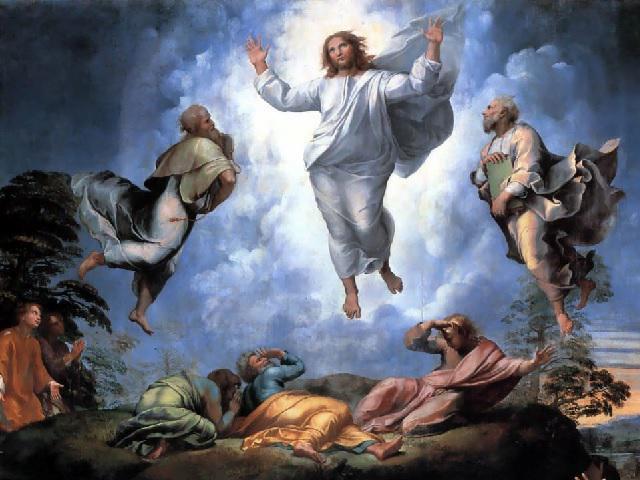The Transfiguration

The Transfiguration is a masterpiece painting by the renowned Italian artist Raphael Sanzio, completed in 1520. Commissioned by Cardinal Giulio de Medici in 1516, the painting showcases Raphael's exceptional talent during his late period. The artwork beautifully combines two significant biblical episodes - the Transfiguration of Christ on Mount Tabor and the apostles awaiting the resurrection of the Lord. In the upper part of the painting, we see Christ transfigured between Moses, Elijah, Peter, John, and James, while the lower part depicts the apostles struggling with a demon-possessed boy.
Raphael skillfully connects the two scenes through lighting and chromatic effects, creating a harmonious composition that conveys a powerful message of faith and grace. The upper portion exudes a sense of serenity and solemnity, in contrast to the dynamic and intense movement depicted in the lower half. The painting is characterized by its vibrant colors, intricate details, and masterful use of light to create a sense of drama and depth.
Tragically, Raphael passed away at the young age of 37 before completing the lower half of the painting. His disciple, Giulio Romano, finished the work in his honor, staying true to Raphael's style and vision. The unfinished nature of the painting in the lower section serves as a poignant reminder of the artist's untimely death and adds a layer of complexity to the overall composition.
The Transfiguration is housed in the Vatican Museums, where it continues to captivate visitors with its beauty and spiritual significance. As one of Raphael's final masterpieces, the painting represents the culmination of his artistic career and remains a testament to his enduring legacy in the world of art. Visitors to the Vatican Museums can marvel at this iconic work, appreciating its intricate details, profound symbolism, and timeless beauty that have made it a beloved treasure of the art world.
© ChatGPT 3.5
*Although it was originally commissioned by Cardinal Julius de' Medici, future Pope Clement VII, to be placed in the cathedral of Saint Justus in Narbone, France, the work was never sent to that place, since after the death of Raphael, the The cardinal kept it and later gave it to the church of San Pedro in Montonrio, in Rome, to be placed on the main altar.
*In 1797, following the Treaty of Tolentino, an agreement that forced Pope Pius VI to make strong economic and territorial concessions to the French, the work, like many others, was taken to Paris. However, after the fall of Napoleon, it was returned in 1816 and kept in the Pinacoteca de Pío VII.
*The Transfiguration was the last painting made by Raphael and can be considered the artist's spiritual testament.
*An honorable oil copy, made by Gianfrancesco Penni, a disciple of Raphael, is preserved in the Museo Del Prado in Madrid; Also, a mosaic copy was installed in St. Peter's Basilica in Vatican City in 1767.
*The philosopher Nietzsche interpreted the work in his book "The Birth of Tragedy" as an image of the conflict between Apollonian and Dionysian principles.